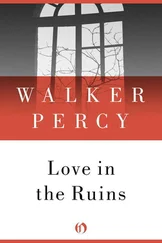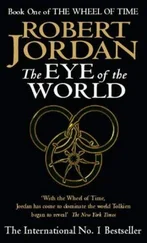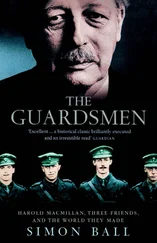Portlock may already have worked for Etches but apparently he didn’t know Dixon. Banks, however, did know him. Dixon had been in contact with him in late August 1784 to propose an expedition across America starting in Quebec. Dixon wanted it to be as much a scientific expedition as a commercial one. He volunteered to undertake the astronomical work and to assign David Nelson, whom he knew from the Resolution , to be responsible for natural history. As Banks had recommended Nelson to be the naturalist on the Resolution , he would have been pleased with this suggestion.[19] All the other personnel, thirty or forty men, Dixon thought he could get in Quebec where there was a greater likelihood of finding men who knew the trade and even some indigenous languages.[20] In his reply Banks welcomed the idea but thought the time was not right, since a new nation, the United States, had just been declared on that continent.[21]
As a consolation, Banks may have suggested to Dixon that he should attach himself to a commercial venture to the Pacific, and it is very likely that it was Banks who told Dixon about Etches.[22] However the connections were made, what was important was that by including two veterans of Cook’s final voyage, Etches was drawing a line directly from Cook to himself, coupling London, again, to Nootka Sound.
Thunberg’s reply to Banks has not survived, but it is highly likely that he repeated his positive opinion of Japan. In Etches’ proposal to the East India Company to allow him to trade at Canton, he referred to his having received ‘the most flattering encouragement from conversation of Gentlemen of the greatest eminence and abilities (for knowledge of Japan)’.[23] The East India Company granted approval in the early part of May for the venture to proceed and to open up commercial relations with Japan.[24]
Etches then bought two ships and began fitting them out for the voyage. By the beginning of June the ships were being provisioned and then a problem was discovered. Etches also needed the permission of the South Sea Company, whose charter included the Northwest Coast of the Pacific, to trade. Negotiations, conducted by George Rose, Secretary to the Treasury, were quickly begun and by 4 August, all the paperwork was in order.[25]
On 29 August, a distinguished party assembled at Deptford to inspect the ships. In the group were George Rose and Joseph Banks; his schoolfriend Constantine Phipps, now Baron Mulgrave, a member of the Board of Control for India and the Board of Trade; and Sir John Dick, British Consul at Leghorn from 1754 to 1776, a civil servant who had taken an early and keen interest in the venture.[26] Though the ships were ready they had still not been named. George Rose named the larger of the two the King George , and Banks, charged with naming the smaller ship, christened it Queen Charlotte .[27]
And so, on 31 August 1785, the first two ships of the King George’s Sound Company left Gravesend, but it took two more weeks, until 16 September, before they could clear the English coast for the long voyage to the Pacific Northwest by way of Cape Horn and the Hawaii Islands. Portlock was in overall command of the expedition, and captained the King George , while Dixon took responsibility for the Queen Charlotte .[28]
Too impatient to wait for news of the first expedition, which was somewhere in the Pacific, Etches began to plan a second.[29] He found another veteran of Cook’s voyages to command it – James Colnett, who had served as a midshipman for three and a half years under Cook on HMS Resolution on his second voyage to the Pacific.[30]
In the summer of 1786, Colnett, now a first lieutenant, took leave from the Royal Navy (it was peacetime and many naval officers were on half-pay), and, in his own words: ‘Having been recommended to a Company of Merchants trading to the NW side of America, the beginning of July 1786 I receiv’d a Letter from their Secretary offering me the command of a Cutter to perform a Voyage to KING GEORGE’S or NOOTKA SOUND …’[31] That ship was named the Prince of Wales . Its tender was the Princess Royal , under the command of Charles Duncan, a naval man like Colnett.
Preparations for the voyage were quick and even though they missed their sailing date of early August, on 23 September 1786 the ships left Deptford for the Pacific. The second Etches expedition was on its way and this time Banks had a botanical collector on board – Archibald Menzies.
Menzies had first written to Banks at the end of May 1784, when he sent him a letter and a small parcel of seeds from Halifax, Nova Scotia. Menzies explained that he was doing this ‘at the request of Dr. Hope, Professor of Botany at Edinburgh’.[32] While Banks did not know Menzies, he certainly knew John Hope well, having been corresponding with him since 1766 at least.[33] Hope, a physician and an early and ardent supporter of the Linnaean system, had been Regius Professor of Botany in the University of Edinburgh since 1768 and in charge of the Royal Gardens (forerunner of the Royal Botanic Gardens, Edinburgh).[34] Menzies had been born in Weem near Aberfeldy, Perthshire in 1754, the son of a tenant farmer. He had attended Hope’s botany lectures while studying medicine at the university. He also worked for Hope as a gardener between 1775 and 1778.[35]
Menzies never got his medical degree but may have been granted a licence to practise surgery. This would have been enough for him to apply as a surgeon’s mate in the navy, which he did in 1782, and joined HMS Nonsuch that year .[36] A year later he was on HMS Assistance as assistant surgeon and, when he wrote to Banks, he was stationed in Halifax, the base of the North American Station of the Royal Navy, on the same ship.
In 1784, Menzies, now thirty years old, returned to Halifax from cruising the waters of the Caribbean, as part of the duties of the British naval presence in the region.[37] The parcel for Banks contained seeds from where the ship had called: Barbados, Dominica, St Kitts and Nevis in the West Indies, and Sandy Hook, near New York. For those plants he could examine, Menzies remarked, he included their Linnaean names.[38] Menzies ended his letter by telling Banks that the land around Halifax promised excellent botanising and that he would ‘wholly devote [his] vacant hours to natural history … I have no doubt that I shall be enabled to send you another parcel early in the autumn.’[39]
He was as good as his word. On 2 November 1784, Menzies sent Banks a second parcel – the first one he knew had arrived safely and was much appreciated – of seeds from Nova Scotia, several of which he could not find mentioned in the edition of Linnaeus he had with him.[40]
Over the next two years Menzies continued to remain in contact with Banks and sent him seeds, including some from the Bahamas. Unfortunately, as Menzies had to admit, he had been unable to find the species of plants that Banks had specifically asked for.[41]
Still, Banks must have been very pleased. Not only did he have specimens of plants from Nova Scotia but he was now in touch with a professional collector who might just be called a botanist – Menzies’s command of the Linnaean system qualified him for that appellation.
On 12 July 1786, a day before the East India Company gave Etches permission to trade in the Pacific Northwest, Banks got a letter from Menzies that he would soon be in England.[42] A little over five weeks later, 21 August 1786, Menzies wrote to Banks from Chatham to announce his arrival. He said that he was forwarding another parcel of seeds to him and expected to be in London himself in a matter of a few days. He added that he had heard that ‘there is a Ship, a private adventurer, now fitting out at Deptford to go round the World – Should I be so happy as to be appointed Surgeon of her, it will at least gratify one of my greatest earthly ambitions, & afford one of the best opportunities of collecting seeds & other objects of Natural History for you …’[43]
Читать дальше












